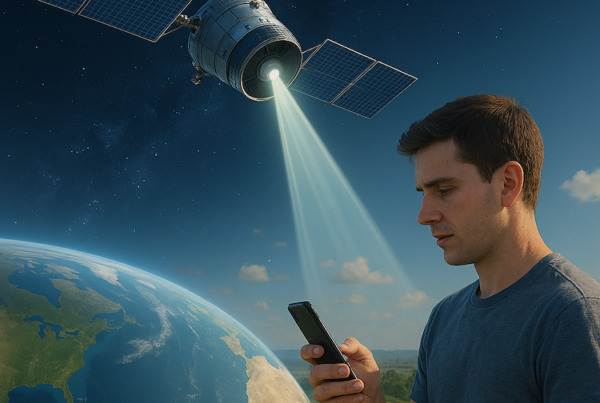While traditional terrestrial cellular networks can only provide coverage to approximately 15 to 20% of the global population, satellite-to-mobile technology holds the promise to extend connectivity to virtually every corner of the Earth. By overcoming geographical limitations and infrastructure challenges, this revolutionary approach aims to achieve near-universal cellular coverage, connecting remote, rural, and underserved regions for the first time.
As the demand for reliable cellular connectivity grows, particularly in remote and rural regions, satellite-to-mobile cellular technology emerges as a groundbreaking solution. Leveraging existing smartphones without the need for specialized satellite phones, this technology allows seamless communication via direct-to-cell satellites, significantly expanding coverage.
Revolutionizing Connectivity Without Specialized Hardware
One of the most compelling advantages of satellite-to-mobile technology is that it operates with everyday smartphones. Unlike traditional satellite communication, which necessitates costly and cumbersome equipment, this innovation simplifies the user experience. By utilizing standard smartphones, users can easily connect via satellites without additional expenses or complex installations.
Testing and Beta Programs: Ensuring Reliability and Performance
Comprehensive testing and beta programs are crucial for validating the reliability and performance of satellite-to-mobile technology. These initiatives meticulously evaluate the technology under real-world conditions, ensuring that performance metrics like signal reliability, latency, and coverage consistency meet stringent standards.
Addressing Early Limitations and Performance Considerations
While early deployments primarily support basic services such as text messaging and emergency text-to-911 communications, ongoing developments aim to extend these functionalities to voice calls and comprehensive data services. Performance considerations, including satellite positioning, weather variability, and challenging terrains, remain critical factors. These aspects underscore the importance of rigorous testing protocols to identify and mitigate potential connectivity issues.
Future Expansion: Enhancing Connectivity and Emergency Response
The broader objective of satellite-to-mobile technology is to revolutionize connectivity, particularly in underserved areas. The potential to vastly improve emergency response capabilities and communication in remote locations is profound. As this technology evolves, reliable and seamless connectivity is anticipated to become increasingly accessible, reshaping global communication standards.
RCATSONE: Setting the Global Standard in Cellular Testing
In the realm of cellular testing, RCATSONE has established itself as the global leader, trusted by telecom giants to ensure the highest standards of mobile and satellite connectivity. With a proven track record of excellence, RCATSONE’s advanced testing protocols play a pivotal role in validating and optimizing satellite-to-mobile technologies. By proactively identifying potential connectivity issues and performance limitations, RCATSONE ensures that emerging solutions meet the expectations of millions of cellular users worldwide.
Satellite-to-mobile cellular testing is more than a technological advancement—it represents a crucial step toward universal connectivity. With rigorous testing and innovative partnerships driving its development, companies like RCATSONE are at the forefront, ensuring the successful deployment of reliable and accessible cellular solutions for everyone, everywhere.



